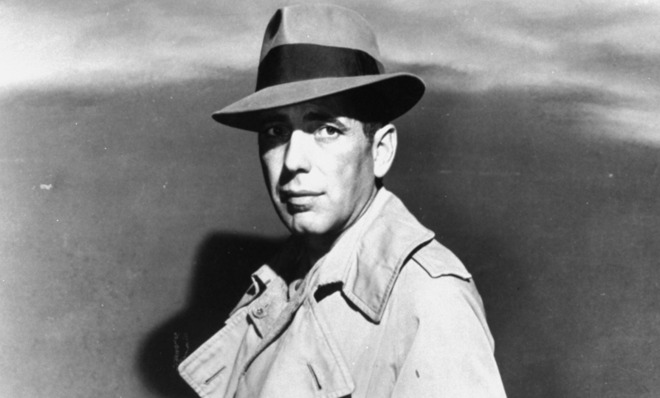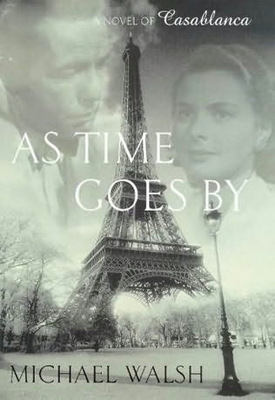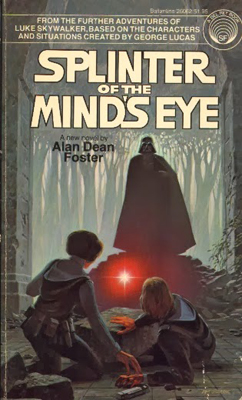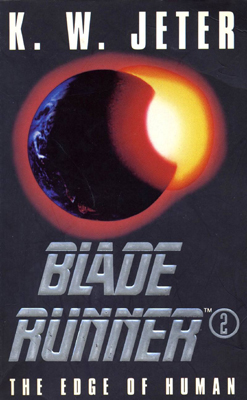9 beloved movies with awful sequels you probably don't know about
The new It's a Wonderful Life sequel probably won't happen after all. But morbidly curious fans can always give an older sequel a spin.


If you're still upset over news of a possible It's a Wonderful Life sequel, we have good news for you: You'll probably get to keep living in a world where It's a Wonderful Life: The Rest of the Story never happens.
Though Star Partners and Hummingbird Productions say they have a script — and the all-important participation of Karolyn Grimes, who played Zuzu in the original — Paramount, which owns the copyright to the original film, says it hasn't given the project a thumbs-up. "No project relating to It's a Wonderful Life can proceed without a license from Paramount," said a spokesman for the studio. "To date, these individuals have not obtained any of the necessary rights, and we would take all appropriate steps to protect those rights."
If, for some insane reason, you were actually excited about the idea of an It's a Wonderful Life sequel, I have good news and bad news. The good: There's already an It's a Wonderful Life sequel, and if you have a VCR, you can buy it right now! The bad: It's completely awful.
The Week
Escape your echo chamber. Get the facts behind the news, plus analysis from multiple perspectives.

Sign up for The Week's Free Newsletters
From our morning news briefing to a weekly Good News Newsletter, get the best of The Week delivered directly to your inbox.
From our morning news briefing to a weekly Good News Newsletter, get the best of The Week delivered directly to your inbox.
As it turns out, many seemingly untouchable classics have had sequels that were so bad that audiences either ignored or forgot about them. Here, the scoop on the long-forgotten It's a Wonderful Life sequel, and 8 other sequels to classic movies that you probably don't know about:
1. The Maltese Falcon (1941)
The sequel: A 1975 movie called The Black Bird
Dashiell Hammett's 1930 detective novel The Maltese Falcon was actually adapted for film twice in the decade after its original publication, including an odd screwball comedy version called Satan Met a Lady in 1936. But John Huston's 1941 adaptation — which starred Humphrey Bogart, Mary Astor, Peter Lorre, and Sydney Greenstreet — towers over both of its cinematic predecessors, and quickly became the definitive version of the story in popular culture.
A free daily email with the biggest news stories of the day – and the best features from TheWeek.com
For almost 35 years, Hollywood left The Maltese Falcon alone. But the idea of a sequel eventually proved too tempting to producer Ray Stark, who owned the rights to the story. The result was a deeply bizarre comedy called The Black Bird, in which George Segal plays Sam Spade Jr. — the son of Bogart's character from the original film — as he attempts to protect the titular statue from a wide range of pursuers that include a Nazi dwarf. Lee Patrick and Elisha Cook Jr. reprise their roles from The Maltese Falcon, but that's not enough to keep The Black Bird from feeling like little more than a strange knock-off.
2. Casablanca (1942)
The sequel: A 1998 novel called As Time Goes By

A Casablanca sequel might sound blasphemous now, but it almost happened — and just a year after the original was released. Warner Bros. commissioned a script called Brazzaville that would have followed the further adventures of Rick Blaine and Captain Renault. Writer Frederic Stephani's script would have retconned the events of Casablanca to reveal that the beautiful friends had secretly been working as Allied operatives all along.
Fortunately, Warners Bros. scrapped that idea over dissatisfaction with the script, and despite two similarly ill-advised TV prequels, Casablanca remained relatively untouched. Unfortunately, the literary sequel we did eventually get — Michael Walsh's As Time Goes By, which arrived in book stores more than 50 years after Casablanca hit theaters — wasn't much better. As Time Goes By serves as both prequel and sequel to the film, revealing why Rick couldn't go back to America and reuniting him with Ilsa shortly after their tragic farewell on the tarmac in Morocco. Walsh gives it his all, but no sequel could ever improve on the ambiguity of Casablanca's legendary ending — and just 15 years after its highly touted publication, As Time Goes By has already been all but forgotten.
3. It's a Wonderful Life (1946)
The sequel: A 1990 TV movie called Clarence
Anyone who's freaking out over the idea of an It's a Wonderful Life sequel can take solace in the fact that Frank Capra's beloved Christmas classic survived the last ill-advised attempt to continue its story: Clarence, a made-for-TV movie that premiered on The Family Channel in 1990. Robert Carradine starred as the titular angel, sent to Earth to teach another family valuable life lessons. How did the movie explain why Clarence, an elderly angel, had suddenly morphed into a 36-year-old man? By stealing a page from Benjamin Button and revealing that angels age backward in heaven — leading to the uncomfortable implication that the beloved character will eventually become a baby.
4. The Birds (1963)
The sequel: A 1994 TV movie called The Birds II: Land's End
Alfred Hitchcock never directed a sequel in his career, though a long string of directors have tried (and failed) to make one that can live up to his suspense masterpiece Psycho. But there's another would-be Hitchock sequel that's been all but forgotten: The Birds 2: Land's End, which premiered on Showtime in 1994.
The Birds has one of the most famously unresolved endings in cinema history, but The Birds 2 dodges answering it by offering a new story set in a small town called Gull's Island. (Wokka wokka!) None of the original characters return, though The Birds star Tippi Hedren pops in for a cameo that fails to buff up the sequels' credibility. Even the director of The Birds II: Land's End was ashamed of it; Rick Rosenthal, who's best known for directing Halloween 2 and Halloween: Resurrection, actually tried to have his name taken off the project in favor of a credit for the pseudonymous Alan Smithee. Unfortunately for his IMDB page, he failed.
5. Rosemary's Baby (1968)
The sequel: A 1976 TV movie called Look What's Happened to Rosemary's Baby
Like many great horror movies, Roman Polanski's Rosemary's Baby succeeds by being restrained. We never actually get a real glimpse of Rosemary's demonic child, though her description upon his birth is horrific enough: "What have you done to him? What have you done to his eyes, you maniacs?"
Unfortunately, the movie's massive success led to a made-for-TV sequel that robbed the story of its power and ambiguity by spending most of its narrative on Rosemary's totally normal-looking son, whose life is being controlled by a Satanic cult. Without Mia Farrow, the film dispatches with Rosemary as quickly as possible (though Ruth Gordon returns, reprising her Oscar-winning role from the original film to far less effect). In the end, Look What's Happened to Rosemary's Baby ends in the only way it really can: With Rosemary's baby having his own baby. The story ends there, though author Ira Levin penned his own sequel called Son of Rosemary in 1997. It was similarly poorly received.
6. Star Wars (1977)
The sequel: A 1978 novel called Splinter of the Mind's Eye

It's hard to believe now, but there was a time when 20th Century Fox was unsure whether Star Wars would be a big enough hit to cover its initial $11 million investment. To cover bases, author Alan Dean Foster — who ghostwrote a novelization of the film called Star Wars: From the Adventures of Luke Skywalker under George Lucas' name — was commissioned to write a literary sequel that could be adapted to a low-budget film using the same props and characters if Star Wars flopped.
Of course, Star Wars was a hit, and we got the film sequels Lucas claims he always intended to make. But Foster's Splinter of the Mind's Eye is a fascinating look at the alternate Star Wars sequel that could have been. The novel follows Luke Skywalker and Princess Leia as they travel to a planet called Circarpous 4 on a mission for the Rebellion, and eventually square off against Darth Vader for the second time. It's clear from the story that the secrets of the Star Wars universe were still relatively fuzzy; there's no hint whatsoever as to Luke and Leia's true parentage, and disturbingly enough, they spend much of the novel playfully flirting.
7. Blade Runner (1982)
The sequel: A 1995 novel called Blade Runner 2: The Edge of Human

Ridley Scott continues to insist that he's working on a big-screen sequel to Blade Runner, which many critics cite as one of the greatest sci-fi movies of all time. But anyone who doesn't want to wait that long can scour their local used bookstore for K.W. Jeter's ambitious sequel, Blade Runner 2: The Edge Human, which aims to unite the timelines of both Blade Runner and Philip K. Dick's Do Androids Dream of Electric Sheep? (on which Blade Runner was loosely based).
Blade Runner 2 deserves credit for taking an error from the original film and making it the center of its narrative: The mysterious "sixth replicant" referenced by Bryant, which remains a dangling plot thread due to a character that was cut from the original script. Jeter's novel fills in the hole by forcing Deckard to track down the missing replicant. Unfortunately, it also revives two characters who were clearly killed in the original film, making Blade Runner's already fuzzy continuity even hazier. Blade Runner 2 ends on a down note, but that's not even the end of the story; though the novel wasn't particularly well-received by Blade Runner fans, it was successful enough to spawn two more Jeter-penned sequels: Blade Runner 3: Replicant Night and Blade Runner 4: Eye and Talon.
8. E.T.: The Extraterrestrial (1982)
The sequel: A 1985 novel called E.T.: The Book of the Green Planet

In the wake of E.T.: The Extraterrestrial's massive success at the box office, director Steven Spielberg and writer Melissa Mathison actually collaborated on a treatment for a sequel called E.T.: Nocturnal Emissions — a much grimmer sequel that would have introduced an evil race of aliens that had been at war with E.T.'s civilization for decades. (Anyone who's curious about this weird, weird idea can actually read the full nine-page story treatment from 1982.)
Obviously, that sequel never happened. But much like Star Wars, William Kotzwinkle — the writer of the novelization for E.T. The Extraterrestrial — was also given a crack at a literary sequel. It's a weird, preachy novel called E.T. The Book of the Green Planet, which came out three years after E.T. hit theaters. Kotzwinkle's novel follows E.T. back to his home planet Brodo Asagi, where he's told he can never return to Earth. But when he gets concerned about Elliott, who has started to forget E.T. in favor of "a girl in his class who wears a rhinestone ponytail clip," the alien decides to disobey orders and fly back to Earth using a spaceship he grew out of a turnip. "He is about to become the most terrible thing of all," says E.T. "He is about to become — Man." Harsh.
9. A Christmas Story (1983)
The sequel: A 1994 movie called It Runs in the Family
There was a minor uproar last year over the direct-to-DVD release of A Christmas Story 2 — a movie that is, by all accounts, completely terrible. But filmmakers looking to cash in on the 1983 holiday classic were actually beaten by nearly two decades: A sequel, helmed by A Christmas Story director Bob Clark, that was originally titled It Runs in the Family, which arrived in 1994.
Like A Christmas Story, author Jean Shepherd — who wrote the non-fiction stories on which both films were based — serves as narrator for It Runs in the Family. That's not the only thing about It Runs in the Family that feels familiar; the film nakedly apes the episodic structure of the original, and features encounters with bully Scut Farkus and the Bumpus family's many dogs. Audiences turned up their noses at these lukewarm leftovers, and the film was ushered out of theaters, where it was quickly forgotten. However, it was eventually retitled My Summer Story for its DVD release, in hopes that fans of the original Christmas Story could be suckered in a little more easily.
Scott Meslow is the entertainment editor for TheWeek.com. He has written about film and television at publications including The Atlantic, POLITICO Magazine, and Vulture.
-
 Political cartoons for December 17
Political cartoons for December 17Cartoons Wednesday's political cartoons include healthcare costs, the affordability hoax, giving up pencils, and more
-
 Trump vs. BBC: what’s at stake?
Trump vs. BBC: what’s at stake?The Explainer The US president has filed a $10 billion lawsuit over the editing of Panorama documentary, with the broadcaster vowing to defend itself
-
 Animal Farm: has Andy Serkis made a pig’s ear of Orwell?
Animal Farm: has Andy Serkis made a pig’s ear of Orwell?Talking Point Animated adaptation of classic dystopian novella is light on political allegory and heavy on lowbrow gags
